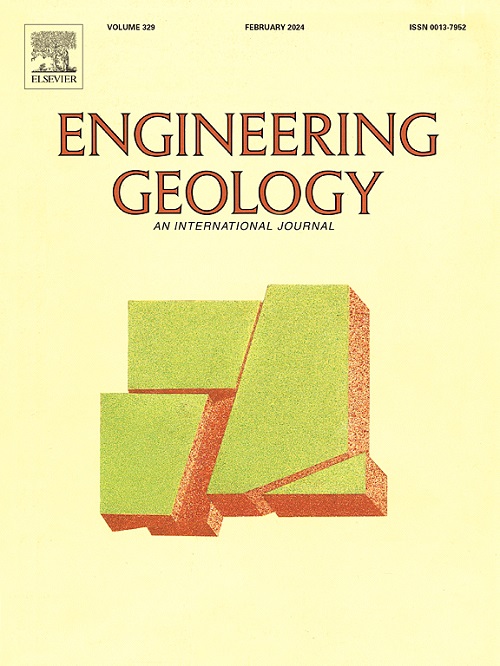基于锥贯试验数据的黏性土应力历史评估的数据驱动机器学习方法
IF 8.4
1区 工程技术
Q1 ENGINEERING, GEOLOGICAL
引用次数: 0
摘要
准确评估地静应力历史对于预测土壤的变形特征和工程特性至关重要,因为它受到各种岩土和地质因素的影响,如变化荷载、地下水波动和环境条件。尽管使用固结试验的传统实验室方法仍然可以提供应力历史的直接参考,但它通常具有明显的局限性,特别是对于淤泥和砂,而且也很耗时。因此,替代的间接方法,如分析锥贯入测试(CPT)的现场测试数据,也因其快速简便的实际应用和连续剖面等优点而得到了发展和广泛采用。然而,尽管有这些优点,基于cpt的应力历史估计的可靠性仍然存在问题。本研究提出了一种强大的数据驱动方法,利用CPT数据增强应力历史预测,解决了现有的可靠性问题。通过应用先进的机器学习技术,包括深度神经网络(DNN)、支持向量回归(SVR)、随机森林(RF)、极端梯度增强(XGB)和光梯度增强机(LGBM),进行了广泛的调查。该方法利用从全球CPT测试站点汇编的大规模高质量全球数据库,重点关注锥体尖端阻力、孔隙水压力和深度等关键可测量参数。本研究还涉及基本的方法步骤,如数据预处理、超参数调优和5倍交叉验证。结果表明,与传统方法相比,基于机器学习的模型在预测超固结比(OCR)和预固结应力(σp’)方面取得了显著提高。本文章由计算机程序翻译,如有差异,请以英文原文为准。
Data-driven machine learning approach for stress history evaluation in cohesive soils using cone penetration test data
Accurately assessing the geostatic stress history is crucial for predicting the deformation characteristics and engineering properties of soils, as it is influenced by various geotechnical and geological factors such as varying loads, groundwater fluctuations, and environmental conditions. Although a traditional laboratory method using consolidation tests still provides a direct reference of stress history, it often has clear limitations, particularly with silts and sands, and is also time-consuming. As a result, alternative indirect approaches, such as analyzing field test data from the Cone Penetration Test (CPT), have also been developed and widely adopted due to their advantages such as fast and easy practical application and continuous profiling. However, despite these advantages, concerns remain regarding the reliability of CPT-based stress history estimation. This study proposes a robust data-driven approach to enhance stress history prediction using CPT data, addressing the existing reliability concerns. An extensive investigation was conducted by applying advanced machine learning techniques, including Deep Neural Network (DNN), Support Vector Regression (SVR), Random Forest (RF), eXtreme Gradient Boosting (XGB), and Light Gradient Boosting Machine (LGBM). The approach utilizes a large-scale and high-quality global database compiled from CPT testing sites worldwide, focusing on key measurable parameters such as cone tip resistance, porewater pressure, and depth. This study also addresses essential methodological steps, such as data preprocessing, hyperparameter tuning, and 5-fold cross-validation. The results demonstrate that the machine learning-based models achieve remarkably improved accuracy in predicting the overconsolidation ratio (OCR) and preconsolidation stress (σp’) compared to conventional methods.
求助全文
通过发布文献求助,成功后即可免费获取论文全文。
去求助
来源期刊

Engineering Geology
地学-地球科学综合
CiteScore
13.70
自引率
12.20%
发文量
327
审稿时长
5.6 months
期刊介绍:
Engineering Geology, an international interdisciplinary journal, serves as a bridge between earth sciences and engineering, focusing on geological and geotechnical engineering. It welcomes studies with relevance to engineering, environmental concerns, and safety, catering to engineering geologists with backgrounds in geology or civil/mining engineering. Topics include applied geomorphology, structural geology, geophysics, geochemistry, environmental geology, hydrogeology, land use planning, natural hazards, remote sensing, soil and rock mechanics, and applied geotechnical engineering. The journal provides a platform for research at the intersection of geology and engineering disciplines.
 求助内容:
求助内容: 应助结果提醒方式:
应助结果提醒方式:


